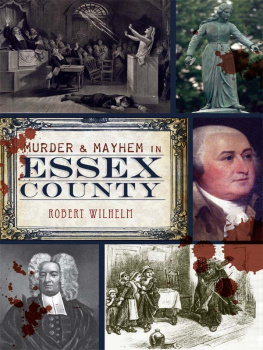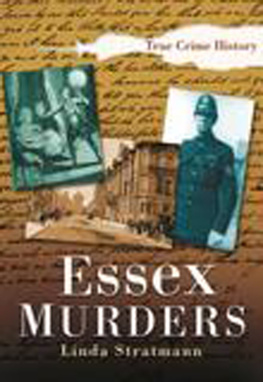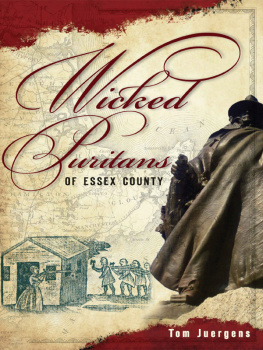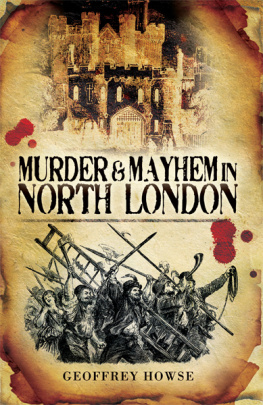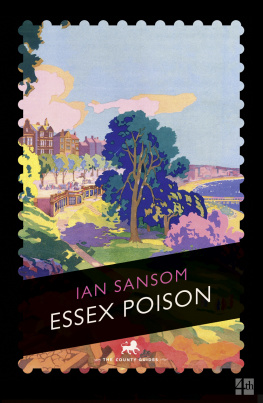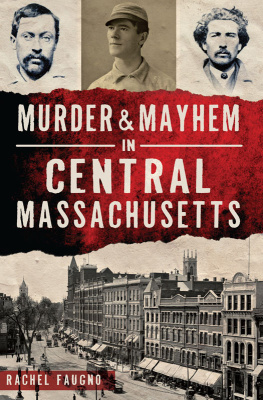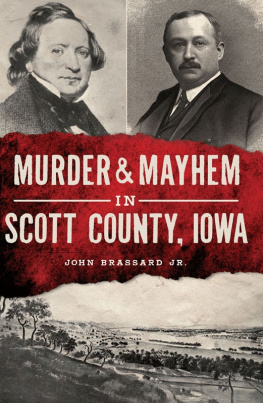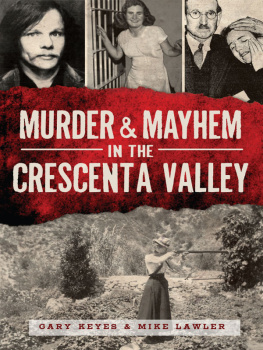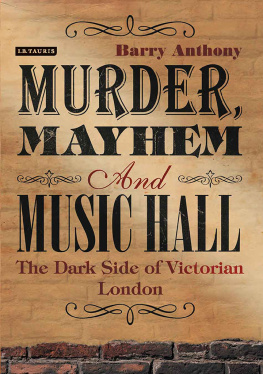

Published by The History Press
Charleston, SC 29403
www.historypress.net
Copyright 2011 by Robert Wilhelm
All rights reserved
Front cover: Hannah Duston Monument, photo by Peter Meo; Joseph White, by Benjamin Blyth, courtesy of Peabody Essex Museum.
First published 2011
ebook edition 2012
ISBN 978.1.61423.431.9
Library of Congress Cataloging-in-Publication Data
Wilhelm, Robert.
Murder and mayhem in Essex County / Robert Wilhelm.
p. cm.
Includes bibliographical references.
print edition ISBN 978-1-60949-400-1
1. Murder--Massachusetts--Essex County--History. 2. Violent crimes--Massachusetts--Essex County--History. 3. Essex County (Mass.)--History, Local. I. Title.
HV6533.M4W55 2011
364.1523097445--dc23
011041042
Notice: The information in this book is true and complete to the best of our knowledge. It is offered without guarantee on the part of the author or The History Press. The author and The History Press disclaim all liability in connection with the use of this book.
All rights reserved. No part of this book may be reproduced or transmitted in any form whatsoever without prior written permission from the publisher except in the case of brief quotations embodied in critical articles and reviews.
ACKNOWLEDGEMENTS
I would like to thank my wife, Anne, for coordinating the acquisition of pictures and other miscellaneous legwork necessary to the production of this book. Thanks to my son Tom (www.tom-wilhelm.com) for the fantastic original drawings, and thanks to Peter Meo (www.petermeophotography.com) for the excellent original photographs. And thank you to Kurt Wilhelm (no relation) for providing information on the murder of Carrie Andrews.
INTRODUCTION
Just three years after the Pilgrims landed at Plymouth Rock, the first settlers put down roots in what would later become Essex County, Massachusetts. If the legends are true, that the Plymouth colonists lived in harmony with one another and at peace with the natives, the same cannot be said of Essex. From the earliest days, life in Essex County reads like an adventure book filled with Indian fighters, highwaymen, pirates and witches. Even as civilization overtook Essex County in the years that followed, a frontier spirit remained in certain quarters, where murder and mayhem were the order of the day.
Of course, violence had existed in that corner of the world long before the English arrivedthe native Agawam tribe periodically fought off attacks from the Tarrantines, a rival tribe from the north, and the Indians had their own domestic transgressions and punishmentsbut the English brought with them the notion of written history. This account begins when the magistrates of the Massachusetts Bay Colony began recording dates, places, victims and criminals.
The first bit of mayhem brought by the English to the land of the Agawams occurred before white men had even settled there. Starting about 1611, the Virginia Colony sent voyages up the coast to the land they called North Virginia looking for sites for future settlement. In 1614, Captain John Smith of Virginia described the land of the Agawams:
Here are many rising hills, and on their tops and desents are many corne fields and delightful groues. On the east is an Isle of two or three leagues in length; the one halfe plaine marish ground, fit for pasture, or salt ponds, with many faire high groues of mulberry trees. There are also okes, pines, walnuts, and other wood, to make this place an excellent habitation.

Essex County, Massachusetts. By Tom Wilhelm.
The early English visitors found the natives of Agawam friendly, treating them more kindly than had other Indian tribes. But the contact was devastating for the Agawam tribe, which by 1617 was almost completely wiped out by a plague, probably smallpox or hepatitis.
The Agawams remained friendly to the English as settlement of their land began in the 1620s, but now it was out of necessity as much as natural congeniality. In their diminished state, the Agawams had trouble defending themselves from their traditional enemies from the north. They depended on help from the English, who were now also threatened by the raiding Tarrantines. As the colonies began to grow, Masconomet, the sachem, or chief, of the Agawam tribe, remained a friend to the English, and in 1638, he agreed to sell for twenty pounds the land that would include most of Essex County.

The deed to Ipswich signed by Masconomet. From A Sketch of the Life of John Winthrop the Younger.
Masconomets death in 1658 prompted the last act of mayhem perpetrated against the Agawams by English settlers. Masconomet was buried on Sagamore Hill, in a part of Ipswich that would later become the town of Hamilton. Though Masconomet had always been a friend to the English, a gang of young rowdies dug up his remains and paraded around town with Masconomets skull on a pole. The vandals were arrested and punished by the Town of Ipswich.
Masconomets remains were reburied on Sagamore Hill, but the incident distressed the tribeby their religion, disturbing the grave had caused the spirit of Masconomet to return to roam the earth until the proper ceremony was performed. This ceremony was not performed until 1993, when Oee-Tash, chief of the Ponkapoag tribe on Cape Cod, performed the sacred ceremony. Today, Masconomet shares Sagamore Hill with a U.S. Air Force radio observatory. His grave is in a secluded section of the hill but is open to the public. People who visit the site leave tributes of photographs, dream catchers and other handmade decorations.

Masconomets grave today. Photo by Peter Meo.
With the exception of the story of Hannah Dustins capture by, and escape from, the Abenaki Indiansa particularly violent and controversial tale of Essex County murder and mayhemall the stories in this book involve settlers from abroad and their descendants. I begin this account with the earliest murders occurring in the Puritan settlements in Essex. Although information is sparse, it is clear that these cases had a powerful impact on the community. The facts come from public records and from the diaries and histories written by patriarchs such as John Winthrop and Cotton Mather. Where direct quotes are included, I have kept the original spelling, punctuation and capitalization, inserting missing words only when absolutely necessary to preserve the meaning. As in other modern accounts, I have used standardized spelling of proper names, though they may have been spelled differently in documents at the time.
The Puritans came to the New World to found a perfect community based on righteousness and strict adherence to their interpretation of Gods law. For this to work, the entire community needed to share Puritan beliefs, and this became increasingly difficult to enforce in the new settlements. The first murders in Essex County occurred within ten years of the earliest settlement and were perpetrated by outsidersWilliam Schooler, a marginal character who came to America to flee prosecution for crimes in Europe, and John Williams, a ship carpenter from England who probably would have returned had he not been arrested in Boston for theft. While the first killers came from outside the community, it was not long before the harsh conditions and the strict laws of the Puritans drove some of their own community to murder. Dorothy Talbye and Elizabeth Emerson were Puritan women who, in two separate cases, murdered their own children.
Next page
